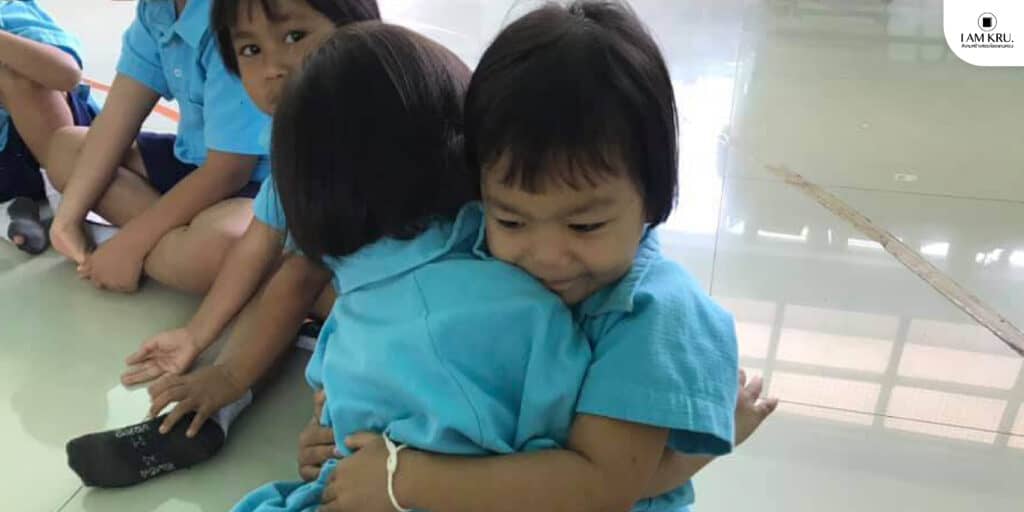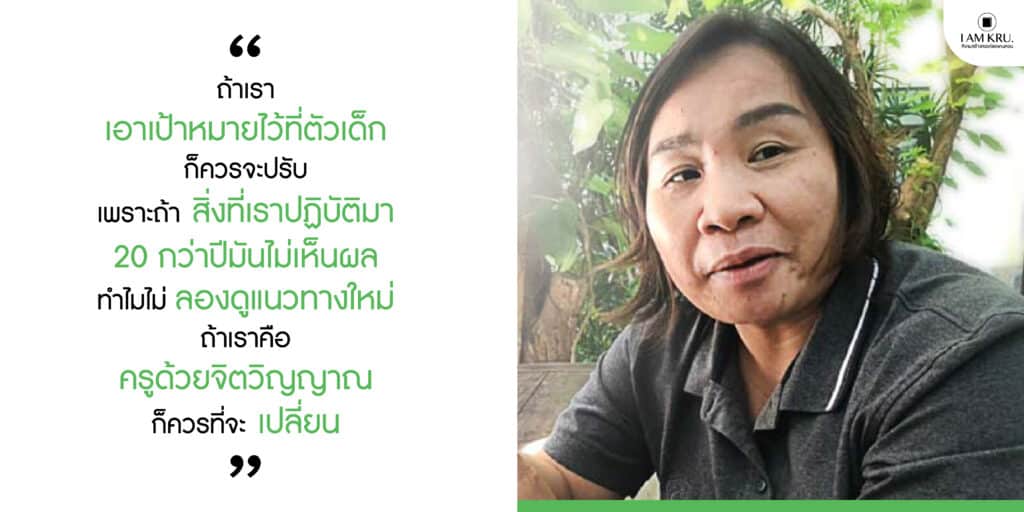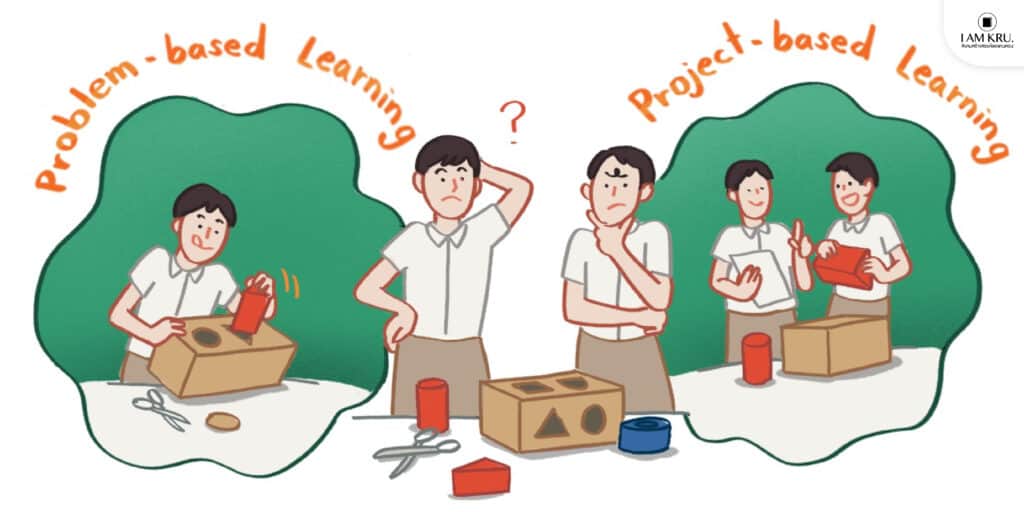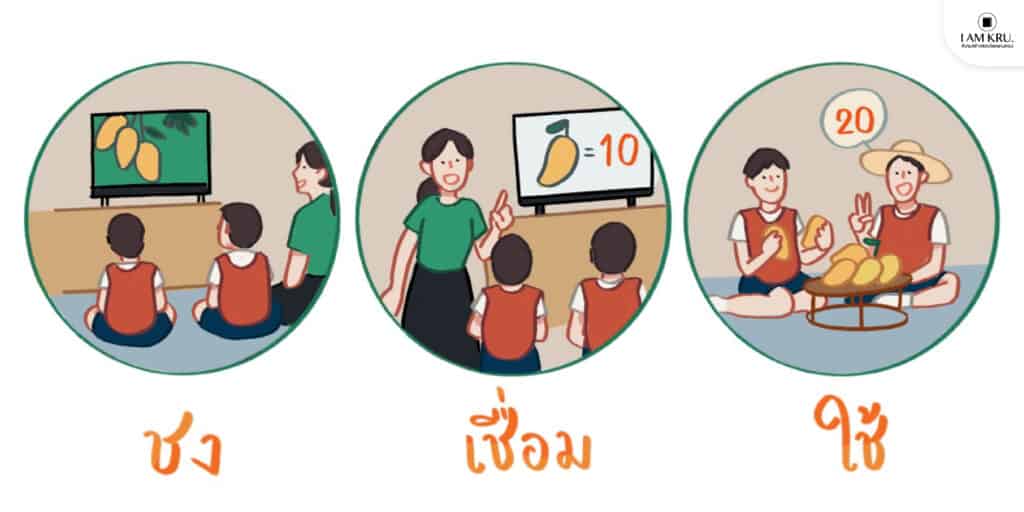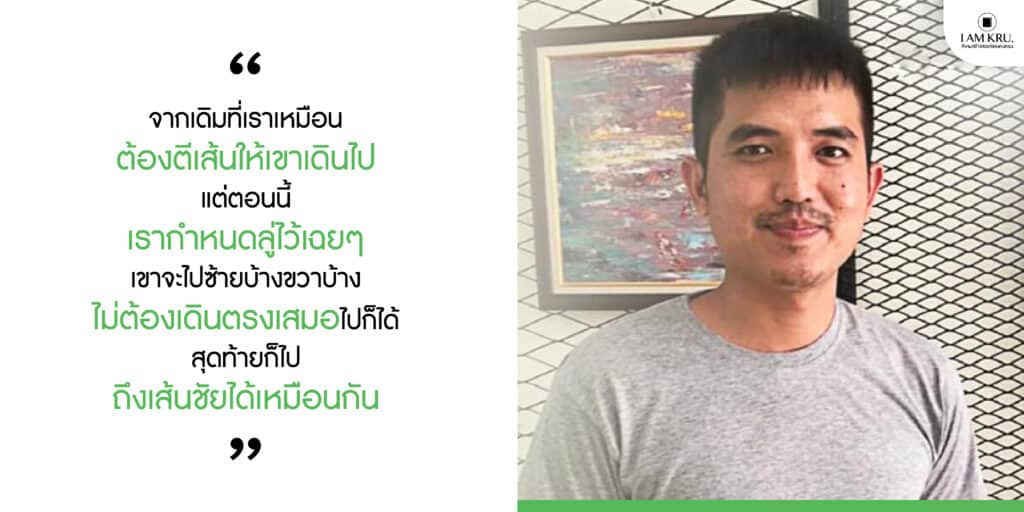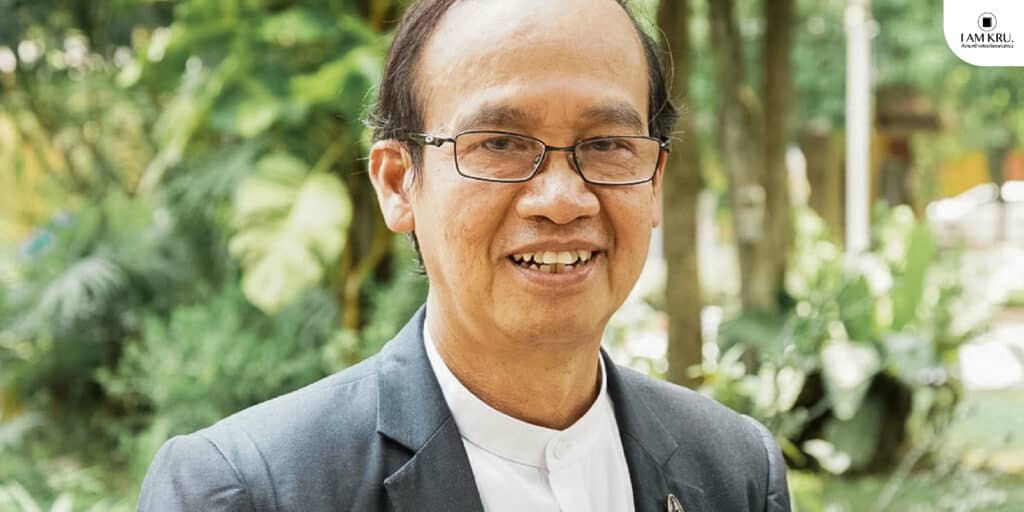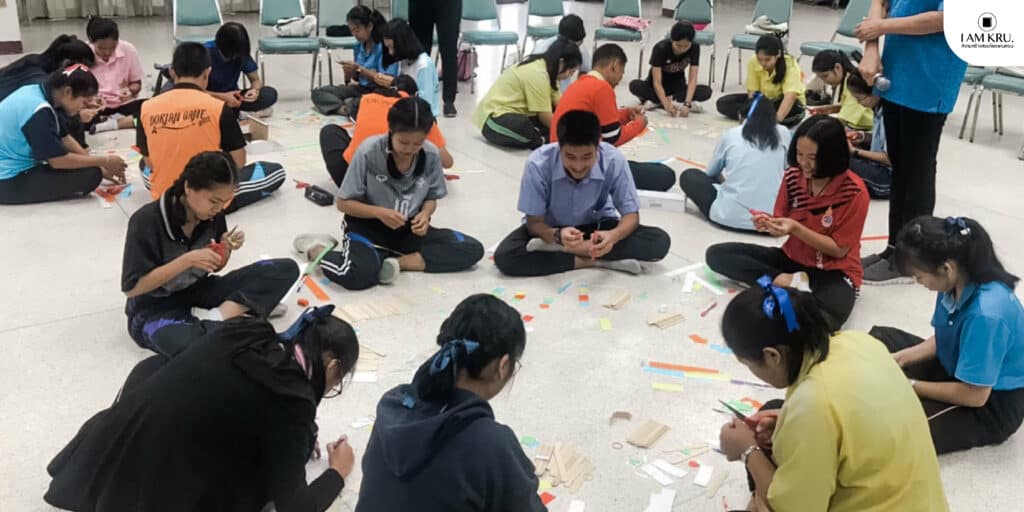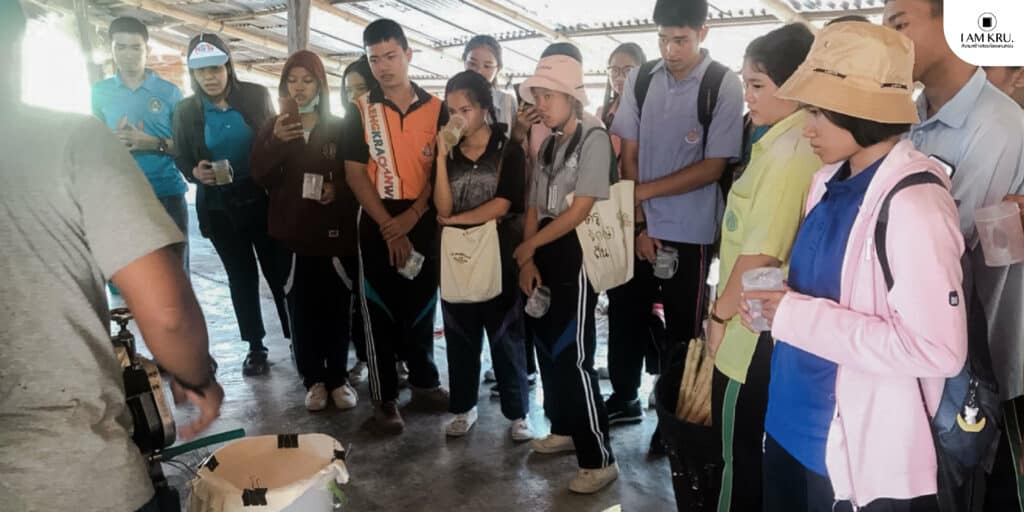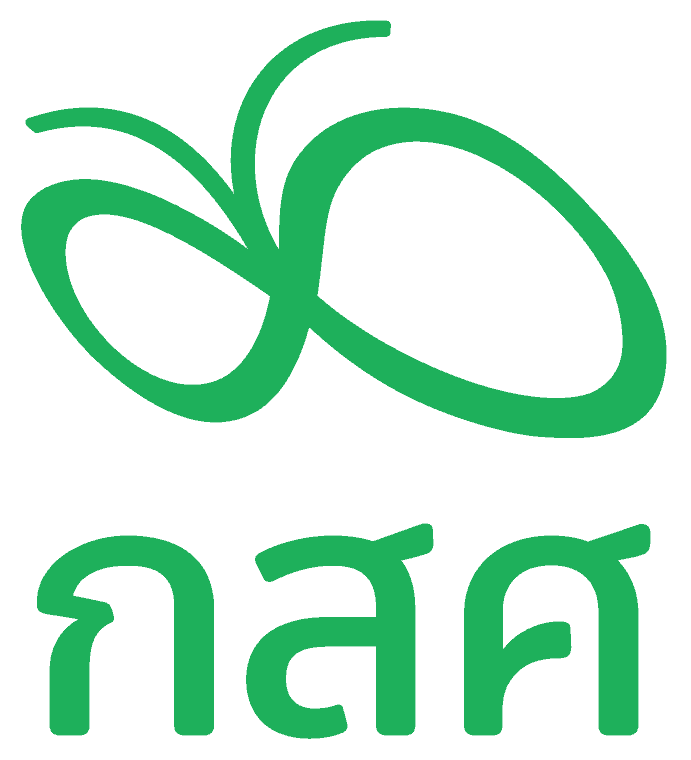Planning enjoyable classroom activities
This article accumulates 5 activities from 5 schools of the Teachers & School Quality Program (TSQP) under the supervision of the Equitable Education Fund (EEF). The activities emphasize active learning or students’ self-education and develop teaching and learning standards by entertainment. In cases of tools or innovations, every student will be provided with equitable accessibility in order to reduce inequality in schools.
EEF, along with TSQP, expect teachers from other schools to apply these activities to their students as a means to help create equal classrooms collectively.
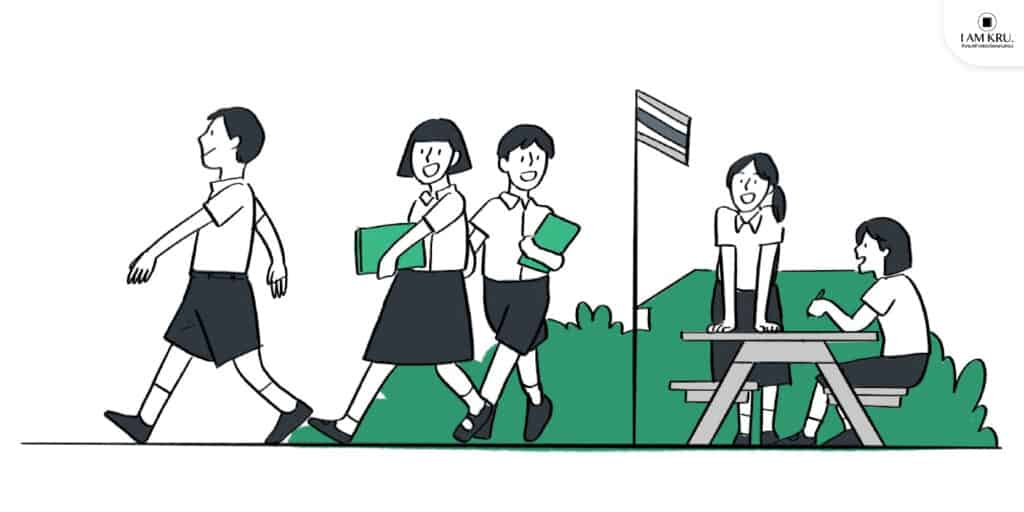
1. “A school without school bells”: prompting students’ responsibilities
Will students be able to do the morning assembly (standing in line to pay respects to the national flag) and attend classes punctually without the school bells?
Normally, the school bells are used to remind students of their school routines. For example, the time of the morning ceremony, class attendance, the end of each class and the time off school. The purpose is to help students realize the time frame, duties and disciplines. However, Lamplaimat Pattana school, located in Buriram province, expresses a different view on the matter by questioning if it is more effective for schools to avoid ‘forcing.’ Rather, instruct students ways to ‘manage themselves’.
Mr. Wichian Chaibang, school director of Lamplaimat Pattana school, revealed abandoning the use of school bells helps train children to know their duties; what to do now and what to do next, without a sense of being coerced. On that account, students will develop in self management, knowing what they are doing within a time limit as well as work planning. It is important for students to become responsible and punctual which are the characteristics necessary to work with other people in the future.
“We will do everything to avoid forcing students. The school bells will then be discarded. We will create a new culture where students can organize themselves at different times. Consistency will generate a sense of time that children need to have in order to manage themselves without anyone telling them what to do.”
In the initial stage of adaptation, it takes time for both teachers and students in terms of training. Teachers must not force students while they put effort to realize more about their duties. With consistency, students will be able to adapt to the new rule. It will become a beneficial habit that students can apply to the world outside of school where there are no school bells. This achievement of abandoning the school bells has influenced many schools all over the country as regards students’ practice of self discipline.

2. Adjust class schedule and alter teaching methods with PBL integration
The major classroom problem in Thailand relies on ‘time’ and ‘lesson’. Even though many schools have attempted to elevate the quality of education, the old principles remain. Specifically, portioning weekly study schedules and lessons causes the difficulty in alteration. The curriculum and subjects written separately create the lack of connected knowledge.
Education, therefore, cannot befall students in the most beneficial way. The solution is to adjust the study schedule and lessons by using ‘the same circumstance’ to simultaneously comprehend all the main subjects.
One of the successful examples is Huai Puling school, Omkoi District, Chiang Mai province. The school adjoins various subjects by implementing Project-Based Learning (PBL) to advocate students with self-learning and building their own body of knowledge. Teachers’ roles are changed from full-time teaching to process manager and ‘situation’ builder to students.
Ms. Puangchompoo Hengprasert, school director of Huai Puling school claimed the school still adheres to core courses which are Thai language, Mathematics and English. Other subjects which are Science, Home Economics, Social Studies, Health Education and Physical Education, and Music will integrate into ‘a learning unit’ following distinctive purposes, folk toys and local herbs, for instance. The indicators of each subject will be the elements in learning design for students to efficiently achieve the goal of every subject and enjoy this new learning method.
“When the schedule is transformed, the teaching method and students’ learning outcomes also change. Children will become better at critical thinking, more assertive and more creative. Importantly, this way of teaching method helps reduce inequality. People usually degrade mountainous children with the attitude that they are capable of nothing and have low potential. We then desire to prove otherwise. Every child, mountainous, urban, rich or poor, can improve themselves if given educational opportunities and it is evident to be accurate.”
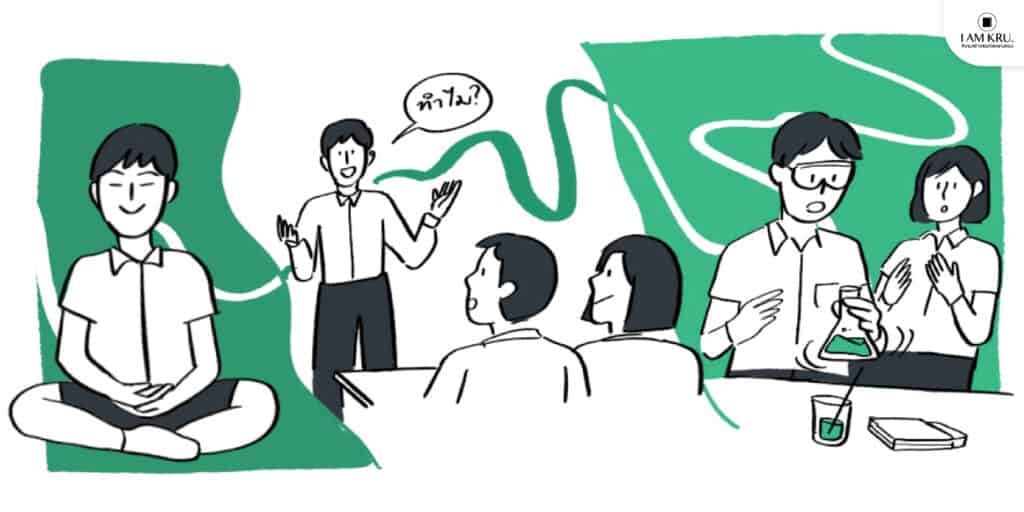
3. Active Learning: sharpen your ideas and actions with “Little Science House”
Prince of Songkla University has conducted a project called “Little Science House” to pave the way for schools that require learning and teaching methods as ‘active learning’ or a focus on learning by doing. The objectives are for students to obtain better communication skills, to have the ability to provide reasons for difficult questions, and to develop their thought process.
The classes of the Little Science House project can be distributed in 4 approaches as follow:
- “Contemplation” or building concentration before classes begin, either meditation or playing games. For example, the patty cake game, a game in which two participants clap their hands together to a rhythm. Meditation brings self-consciousness and solves distraction.
- “Questioning” after students are prepared to study, teachers will lead on to posing open-ended questions to encourage students’ interest in class as they need to find reasons to answer. Close-ended questions with “yes-no” answers should be avoided.
- “Conducting experiments” students figure out the answer by themselves. Once they have it, teachers will not immediately correct them. Rather, children need to take actions to observe the truth. This procedure is a way for students to build their own body of knowledge.
- “Conclusion” the results can be expanded to other studies. Teachers will guide students with questions that are within the learning frame until they can finally summarize and connect them to other objectives.
Chumchon Wat Namkhao school, located in Songkhla province, is a school that decided to apply the Little Science House project to the regular teaching method for kindergarten up until third grade students every Wednesday. Teacher Montana Buhas, a first grade teacher of Chumchon Wat Namkhao school revealed her impression after organizing activities for students
“I am extremely impressed by students’ ability to answer questions that I thought they would not have been able to think of. It reflects that everything is a success because they can eventually figure out the answers by themselves.”
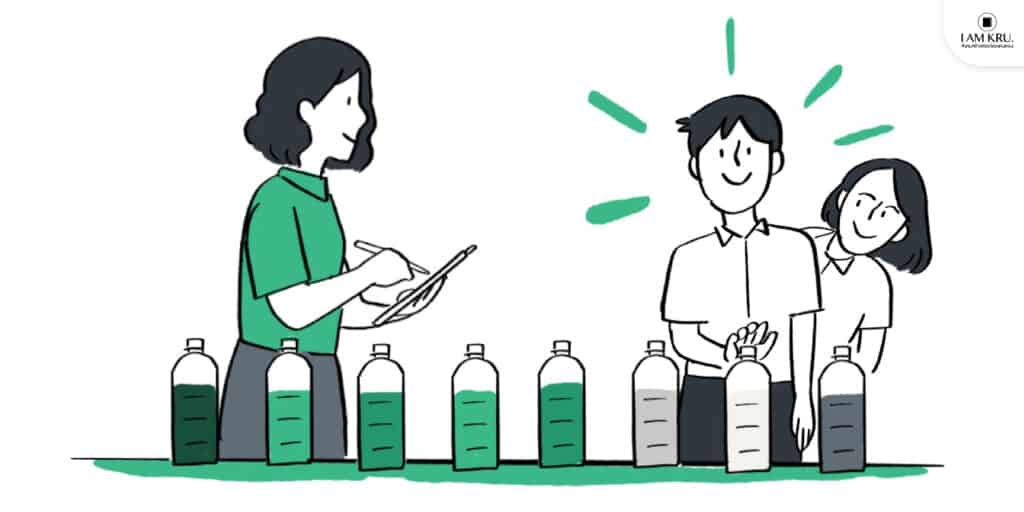
4. Self-assessment by “a bottle of water”
Would it be more efficient if students are allowed to evaluate their own learning?
In general, the sole duty of teachers is to evaluate students’ learning. Nevertheless, Watkukham school, San Pa Tong District, Chiang Mai province enables students’ participation in grading themselves along with assessing the active learning.
The method employed by Watkukham school is arranging ‘colored water bottles’, lining up from full to empty bottles to replace a scale of 1-10. By the end of the activity, students will assess themselves with a range of scores. They will stand in front of the bottles and explain their self evaluation. This technique will help students to reflect and evaluate their doing in different aspects. Meanwhile, teachers will question the details regarding students’ reasons for their self estimation, the good and bad part, and the part that needs improvement.
It is advantageous due to the fact students can reflect on certain perspectives that teachers may not recognize. Likewise, students can develop themselves for the better. This activity is merely a beginning of self-assessment because there are a number of available methods that other schools can put into effect.
“The result may be just a number that cannot determine the good, the bad, the proficiency and the weakness of learners. Rather, it is to observe each skill’s evolution. In the future, there will be courses to evaluate competency which is not a test, but an assessment of students’ ability. It can be compared to the Taekwondo promotion from the yellow belt up to the black belt which will be determined by the real competency. This way of evaluation will play a role in competency learning more.” said Assoc. Prof. Dr. Thunyawich Wichianpan, director of the Office of Research and Innovation Development Sripatum University Chonburi Campus.

5. Pangpoy Maker: a space for creativity development
Effective learning is learning by doing and thinking that will result in one’s own achievement.
Starfish Country Home School Foundation then establishes STEAM Design Process or a tool to develop creative thinking and problem solving skills through designing one’s own work. This process is the beginning of “Pangpoy Maker” an activity of Ban Pang Poy school, Fang District, Chiang Mai province that initiates a creative space allowing students to pursue their learning interest. Producing works under the “Pangpoy Maker” consists of 5 processes as follow:
- “Questioning” about what is to be produced
- “Imagining” by using creativity to imagine the product’s appearance
- “Planning” by using critical thinking while searching for information along with planning the processes
- “Doing” by creating the work with existing skills
- “Reflecting” and “Redesigning” by furthering the work for the better
An example of students’ product from the Pangpoy Maker is ‘herbal crispy crepe from green banana flour.’ The product has passed several productions and developments which was finally awarded by National Arts and Crafts for Students in Food Processing Contest Activities 2019. This is considered to be a success of transforming the teaching methods which abandons memorizing the existing recipe. Instead, concentrating on recipe development is more significant.
“Teachers will no longer teach or guide. Rather, they will help to suggest students to self-research. Students have to search for how to make flour from the green banana via the internet. Although it may turn out as a failure in the first place, they have to improve it in which this is the core of active learning.”
said Teacher Siribhorn Taechanan, a teacher of Ban Pang Poy school.
The 5 activities exemplified highlight students’ doing with enjoyment along with the insertion of knowledge in every process. The Equitable Education Fund (EEF) and the collaborative organizations are honored to have created each activity and wish for all schools in the country to apply the task to their students in order that they can develop skills necessary to their living in the future completely.
1,190
- Active Learning, PBL, Problem – based Learning : PBL, STEAM Design Process, บ้านวิทยาศาสตร์น้อย, ปางปอยเมกเกอร์, พวงชมพู เฮ็งประเสริฐ, มหาวิทยาลัยศรีปทุม, มหาวิทยาลัยสงขลานครินทร์, มูลนิธิโรงเรียนสตาร์ฟิชคันทรีโฮม, รศ.ดร.ธันยวิช วิเชียรพันธ์, วิเชียร ไชยบัง, ศิริพร เตชนันท์, โรงเรียนชุมชนวัดน้ำขาว, โรงเรียนบ้านปางปอย, โรงเรียนบ้านห้วยปูลิง, โรงเรียนลำปลายมาศพัฒนา, โรงเรียนไร้เสียงออด
- Active Learning, PBL, Problem – based Learning : PBL, STEAM Design Process, บ้านวิทยาศาสตร์น้อย, ปางปอยเมกเกอร์, พวงชมพู เฮ็งประเสริฐ, มหาวิทยาลัยศรีปทุม, มหาวิทยาลัยสงขลานครินทร์, มูลนิธิโรงเรียนสตาร์ฟิชคันทรีโฮม, รศ.ดร.ธันยวิช วิเชียรพันธ์, วิเชียร ไชยบัง, ศิริพร เตชนันท์, โรงเรียนชุมชนวัดน้ำขาว, โรงเรียนบ้านปางปอย, โรงเรียนบ้านห้วยปูลิง, โรงเรียนลำปลายมาศพัฒนา, โรงเรียนไร้เสียงออด
Writer
- เอื้อการย์ โรจนจิรไพศาล (มะแม้ว)
- นักเขียนผู้หลงรักการผจญภัยในเมือง ปรัชญาในชีวิตจริง และการไป Cafe Hopping ทั่วทุกมุมเมือง
